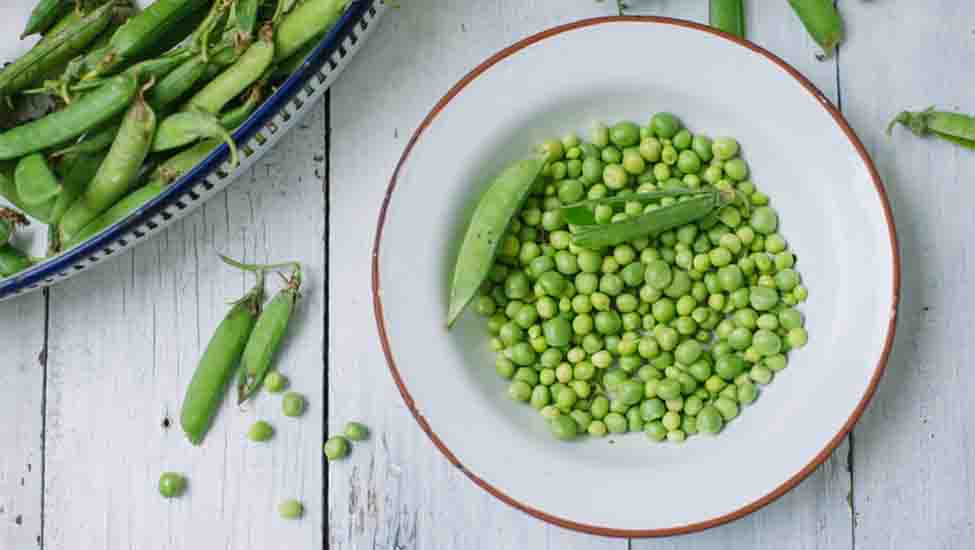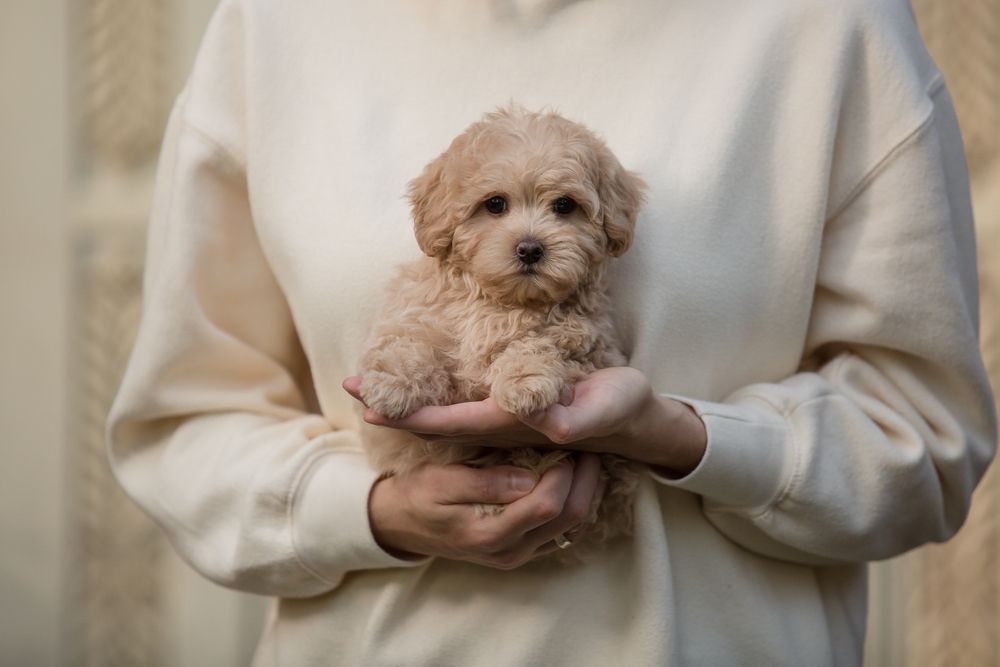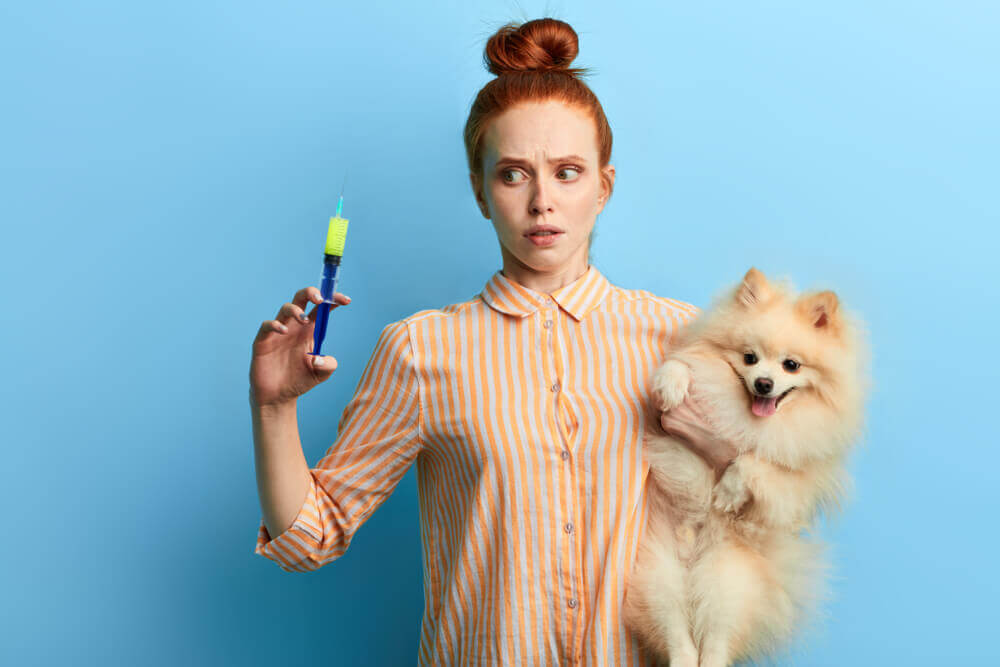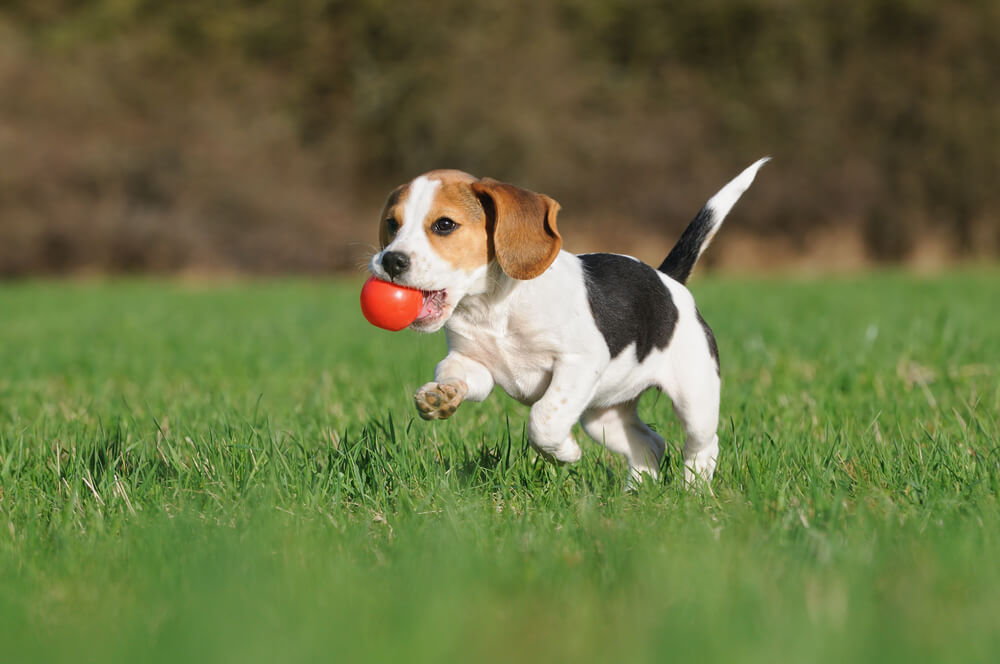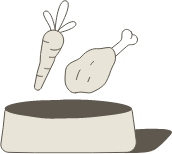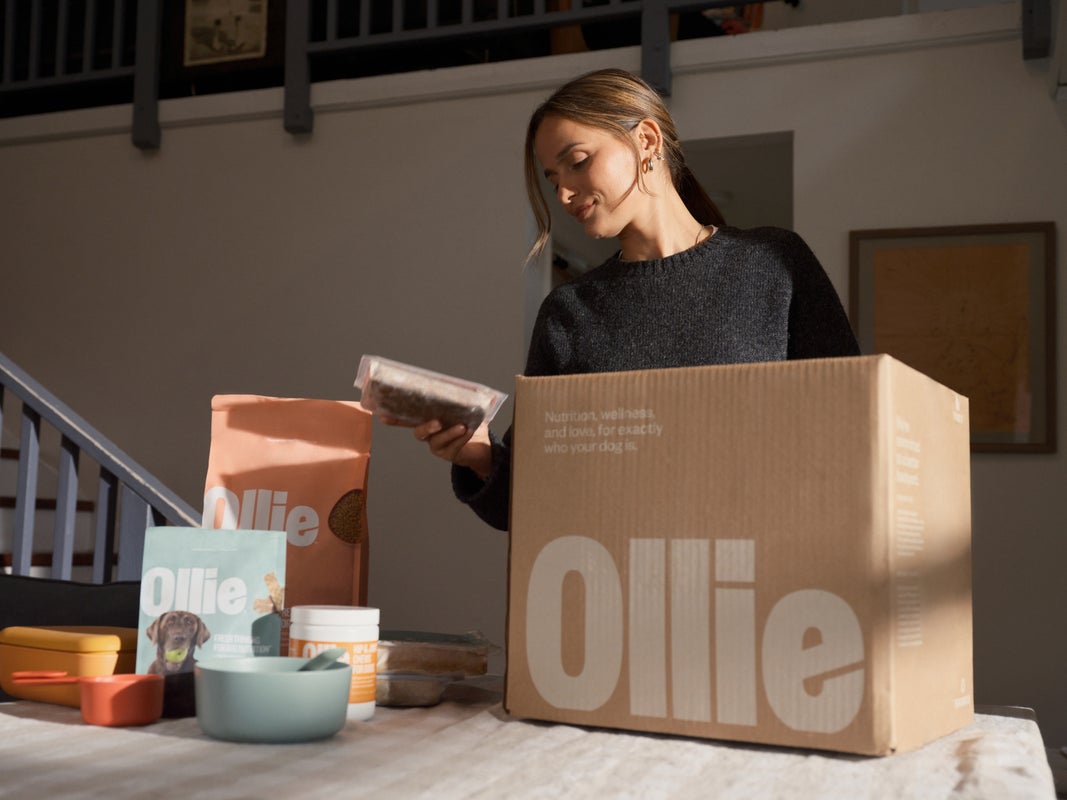Hey Ollie blog readers! We’re offering you an exclusive 60% OFF your starter box! Try now!
Eat your peas! Most humans have this common parental refrain stuck in their heads from childhood. So we assume that they must be the most nutritious of veggies—and they are, for the most part. The same goes for feeding them to our pups (and most actually like the taste!) However, there are a few caveats when including them in your dog’s diet. We talked to Jeff Werber, DVM, President and Chief Veterinarian of the Century Veterinary Group in Los Angeles, to get the scoop so your pup can eat them in pea-ce.
Can Dogs Eat Peas?
Yes, dogs can eat peas! These small but nutrient-packed veggies are a great addition to your dog’s diet. Peas are rich in vitamins A, B, C, and K, as well as fiber and antioxidants that support overall health. Whether served fresh, frozen, or cooked, peas provide a tasty and low-calorie treat that many dogs enjoy.
However, not all peas are created equal—avoid canned peas, which often contain added sodium or preservatives that can be harmful to dogs. As with any new food, introduce peas gradually and in moderation to prevent digestive upset.
Are Peas Safe for Dogs?
Yes, peas are generally safe for dogs, but there are a few things to consider. While most dogs can eat peas without issues, dogs with kidney problems should avoid them. Peas contain purines, natural compounds that can contribute to kidney stone formation in dogs prone to urinary issues.
Also, while fresh and frozen peas are safe, canned peas often contain added salt, which isn’t good for your pup. Always serve peas in moderation and observe your dog for any signs of digestive upset. If you’re unsure whether peas are a good fit for your dog’s diet, consult your veterinarian.
Are Peas Good for Dogs?
Yes, peas are good for dogs and offer several health benefits. They are a great source of plant-based protein, which supports muscle development and energy levels. The fiber in peas aids digestion and helps maintain a healthy weight, while antioxidants support a strong immune system and promote overall well-being. According to the AKC, peas are a good source of vitamins A, B, and K, and they also contain iron, zinc, and magnesium—all beneficial to dogs in moderation.
Additionally, peas contain lutein, a compound that benefits eye, heart, and skin health. Their small size makes them an easy, crunchy snack, but they should always be served plain—without butter, seasonings, or additives.
Best Type of Peas for Your Dog
Not all peas are the same, and some types are better for dogs than others. Here’s a breakdown of the best and safest peas to feed your pup:
- Green Peas (Garden Peas) – A great option packed with vitamins and fiber. Serve them fresh, frozen, or lightly cooked, but avoid adding seasonings or butter.
- Snow Peas – These peas have an edible pod and are low in calories, making them a healthy snack. Just be sure to remove any tough stems before feeding.
- Sugar Snap Peas – Like snow peas, sugar snap peas are safe for dogs and offer a satisfying crunch. They are full of antioxidants and beneficial nutrients.
- Frozen Peas – An excellent option, as they retain their nutrients. Make sure they are plain and free from sauces, seasonings, or added salt.
Peas to Avoid:
- Canned Peas – These often contain added sodium or preservatives, which can be harmful to dogs.
- Split Peas (in large amounts) – While not toxic, large quantities may contribute to bloating or digestive discomfort.
When serving peas, always introduce them gradually and monitor your dog for any signs of digestive upset. If your dog has kidney issues, consult your vet before adding peas to their diet due to their purine content.
Health Benefits of Feeding Peas To Your Dog
Peas are often included in home-cooked and fresh diets for dogs because they’re a fantastic source of fiber — and because they’re a good source of Vitamin K, C, B, zinc, magnesium, iron, potassium and choline, according to Werber. Peas also contain lutein, which is an antioxidant that helps keep their heart, eyes and skin healthy, while the peas’ polyphenol can even help prevent cancer. Dogs usually love their flavor, too. “My old Frenchie is very picky, but I feed him food that has carrots, potatoes and peas in it, and he loves it,” says Werber, who adds that you can also give shelled garden peas and sugar peas to your pup as a snack or include them in treat recipes.
Pea Nutrition for Dogs
Peas might be small, but they bring a lot to the bowl. These little green veggies are packed with nutrients that support your dog’s health—especially when added to their diet in moderation.
Here’s what peas offer:
| Nutrient | Why It Matters for Dogs |
|---|
| Vitamin A | Helps support vision and immune function |
| Vitamin B6 | Aids in brain development and energy metabolism |
| Vitamin K | Essential for blood clotting and bone strength |
| Iron | Helps carry oxygen through the body |
| Zinc | Supports skin, coat, and immune system health |
| Magnesium | Plays a role in muscle function and energy production |
| Fiber | Promotes healthy digestion and regular bowel movements |
| Plant Protein | Supports muscle health in combination with animal protein |
While peas aren’t a complete protein source, they do contain valuable amino acids and vitamins that round out a balanced meal—especially when paired with fresh meats and healthy fats like those in Ollie recipes.
Best Way to Serve Peas to Dogs
Peas are a safe and nutritious treat for most dogs—but how you prepare and serve them makes a difference. Skip the seasoning, keep it simple, and stick to small portions. Too many peas can cause gas or upset stomachs, especially in sensitive pups.
Here’s a breakdown of the most common types of peas and how to serve them safely:
| Pea Type | Safe for Dogs? | How to Serve |
|---|---|---|
| Green Peas | Yes | Steamed, thawed frozen, or fresh |
| Snow Peas | Yes (limit) | Remove tough string, chop if large |
| Sugar Snap Peas | Yes (limit) | Slice to prevent choking |
| Frozen Peas | Yes | Thawed or served cold as a crunchy snack |
| Canned Peas | No | Too much sodium—skip these |
| Pea Pods | Sometimes | Only soft, tender pods—avoid fibrous ones |
Reasons not to feed your dog peas
Some dogs might not be able to digest the coating well, so you may see the pea skin in their stool, Werber says. And a compound in peas called purine can make some dogs have an upset stomach. The purines, which are a naturally occurring chemical compound, produce uric acid, which is filtered through dogs’ kidneys. So if your dog already has kidney problems, he shouldn’t eat peas, as the uric acid can cause kidney stones.
The final verdict if dogs can eat peas
As with almost everything, peas are good for your pup in moderation (and as long as they don’t have an existing kidney issue.) If you notice that your dog is more gassy or has digestive problems, then try eliminating peas from his diet, Werber advises. Also, steer clear of canned or frozen peas, as they typically have added salt, which isn’t great for your pup either. Otherwise, let them eat in peas!
Peas For Dogs FAQ
Can dogs eat peas?
Yes, dogs can eat peas in moderation. Green peas, snow peas, and sugar snap peas are safe when served plain—steamed, thawed, or raw. Avoid canned peas with added salt.
Are peas good for dogs?
Peas are full of fiber, vitamins, and antioxidants. They support digestion, immune health, and energy levels. Just don’t overdo it—too many peas can cause gas or bloating.
How many peas can dogs eat?
For small dogs, start with 1–2 teaspoons of cooked or thawed peas. Medium to large dogs can have up to 1–2 tablespoons. Treat peas as an occasional snack, not a daily staple.
Can dogs eat frozen peas?
Yes! Frozen peas are safe as long as they’re plain and unseasoned. You can thaw them or serve them frozen for a crunchy treat—just make sure they’re not stuck together in a hard clump.
Can dogs eat canned peas?
No, it’s best to skip canned peas. Most are high in sodium or preserved with additives that aren’t dog-friendly. Stick with fresh, frozen, or lightly steamed peas.
Are peas safe for puppies?
Yes, in small amounts. Mash or finely chop peas to prevent choking, and introduce them gradually. Avoid giving puppies large raw pods or whole peas that could be hard to digest.
Can peas cause allergies in dogs?
It’s rare, but possible. If your dog has food sensitivities or a legume allergy, peas may trigger symptoms like itching or digestive upset. Always monitor your dog after trying new foods.
Do peas cause heart problems in dogs?
You may have heard about the FDA’s investigation into grain-free diets with peas and lentils. So far, no direct link to heart disease has been proven. Whole peas in moderation, especially in balanced diets, are still considered safe.
Are peas easy for dogs to digest?
Cooked or lightly steamed peas are easier to digest than raw. Dogs with sensitive stomachs may do better with mashed peas or pureed blends. Watch for signs of gas or loose stools after feeding.
Can dogs eat pea pods?
Soft pods like those from snow peas or snap peas may be safe in small amounts. Remove stringy or tough parts, and chop to reduce choking risk. Avoid fibrous pods that are hard to chew.
The Ollie blog is devoted to helping pet parents lead healthier lives with their pups. If you want to learn more about our fresh, human-grade food, check out MyOllie.com.
Tagged As:

The nutrition your dog needs,
the food they want.

Enjoying our articles? Subscribe our Newsletters and get new articles directly to your inbox
You might also like
26 August 2025
4 MINS READ
Can I Make Fresh Dog Food Myself Instead?
If you’re thinking about switching your dog to a fresh food diet, you might be wondering: “Should I buy fresh dog food or make it at home?” It’s a fair question. Many pet parents like the …
by Ollie Pets
26 August 2025
4 MINS READ
Is Fresh Dog Food Safe?
If you’re thinking about switching your dog to a fresh food diet, you might be asking yourself: “Is fresh dog food safe?” It’s a smart question—because feeding fresh means you’re worki…
by Ollie Pets
26 August 2025
4 MINS READ
How Do I Know How Much Fresh Dog Food To Feed?
If you’ve switched your pup to fresh food, you’re probably wondering: “How much fresh dog food should I feed?” It’s not as simple as scooping kibble from a bag—fresh food is more nutri…
by Ollie Pets
